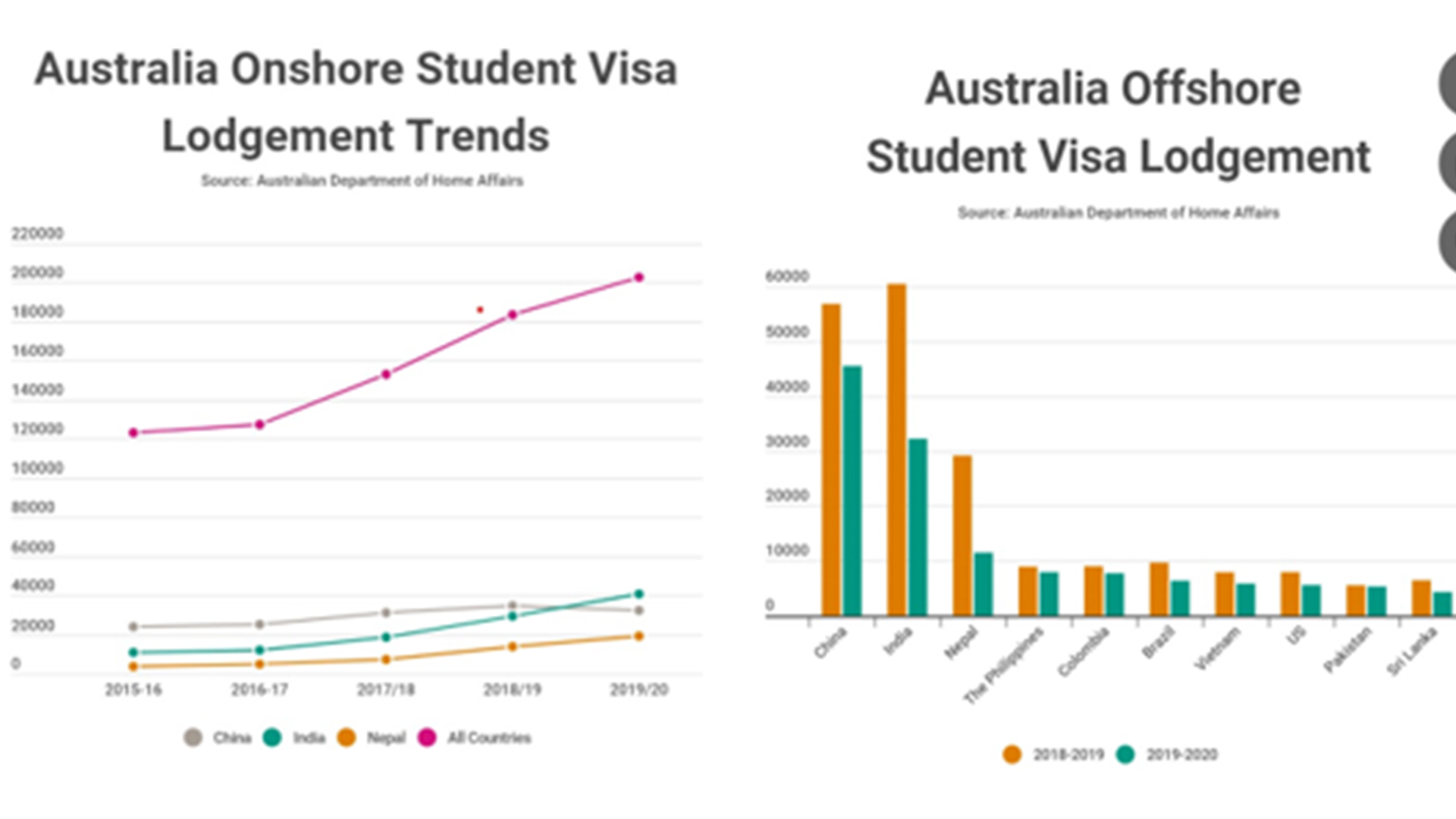4 years ago

Australian offshore student visa application numbers dropped by a third (33.5%) in the 2019-2020 financial year compared to the previous year, according to data from the country’s Department of Home Affairs, with an 88% drop in applications in May alone.
Among the top source countries for students, applications from Nepal dropped by 60.7%, India by 46.7% and China by 19.9%
Numbers from Brazil and Sri Lanka also dropped by around a third, and those from the US and Vietnam by over a quarter.
Speaking during a Q&A session, director of graduate and student visas at the Department of Home Affairs, Mathew Noble, said there were “significant impacts due to travel restrictions” and noted that China had been “a bit more resilient” than other top destinations.
Universities in Australia have regularly been warned about their dependence on international tuition fees as a source of revenue.
A recent report found they accounted for an average of 26.2% of revenue, and in some cases as high as 40%.
Anticipating fewer international students due to Covid-19 has led many to scale back spending – including shutting facilities – in an attempt to save money.
While the majority of the drop can be attributed to Covid-19, the data does, however, reveal that even pre-Covid, there were 9% fewer applications than in the same period the year before.
Among the top source countries for students, applications from Nepal dropped by 60.7%, India by 46.7% and China by 19.9%.
Numbers from Brazil and Sri Lanka also dropped by around a third, and those from the US and Vietnam by over a quarter.
Speaking during a Q&A session, director of graduate and student visas at the Department of Home Affairs, Mathew Noble, said there were “significant impacts due to travel restrictions” and noted that China had been “a bit more resilient” than other top destinations.
Universities in Australia have regularly been warned about their dependence on international tuition fees as a source of revenue.
A recent report found they accounted for an average of 26.2% of revenue, and in some cases as high as 40%.
Anticipating fewer international students due to Covid-19 has led many to scale back spending – including shutting facilities – in an attempt to save money.
While the majority of the drop can be attributed to Covid-19, the data does, however, reveal that even pre-Covid, there were 9% fewer applications than in the same period the year before.
In terms of onshore student visa lodgement, there has been a 10% increase in the number of applications, with Nepal and India seeing increases of 36% and 39% respectively.
In contrast, Australia’s top source of international students, China, has seen a 7% drop in applications. The country’s government has recently warned that Australia is an unsafe destination for its citizens and the relationship between the two nations continues to deteriorate.
Writing for IEAA, IDP Connect CEO Andrew Barkla noted that Australia’s competitors “are opening borders for September start dates and signalling a pathway to employment through clear post-study work policies”.
While Australia has confirmed that online study will count towards post-study work permit requirements, the announcement came later than countries like the UK and Canada.
However, Barkla remains optimistic about the situation. “Our advice for governments and universities is simple. Show students the sector is here to help,” he said, advocating greater support for students with regards to organising flights and accommodation, reassuring parents and showing that measures are in place to mitigate safety risks.
“Our sector must provide students and their parents with clear, practical and aligned information and support, in the market via onshore agents and other key enablers,” he continued.
“Let’s send a signal to the world Australia will do what it takes to continue to be a leading destination for international education.”